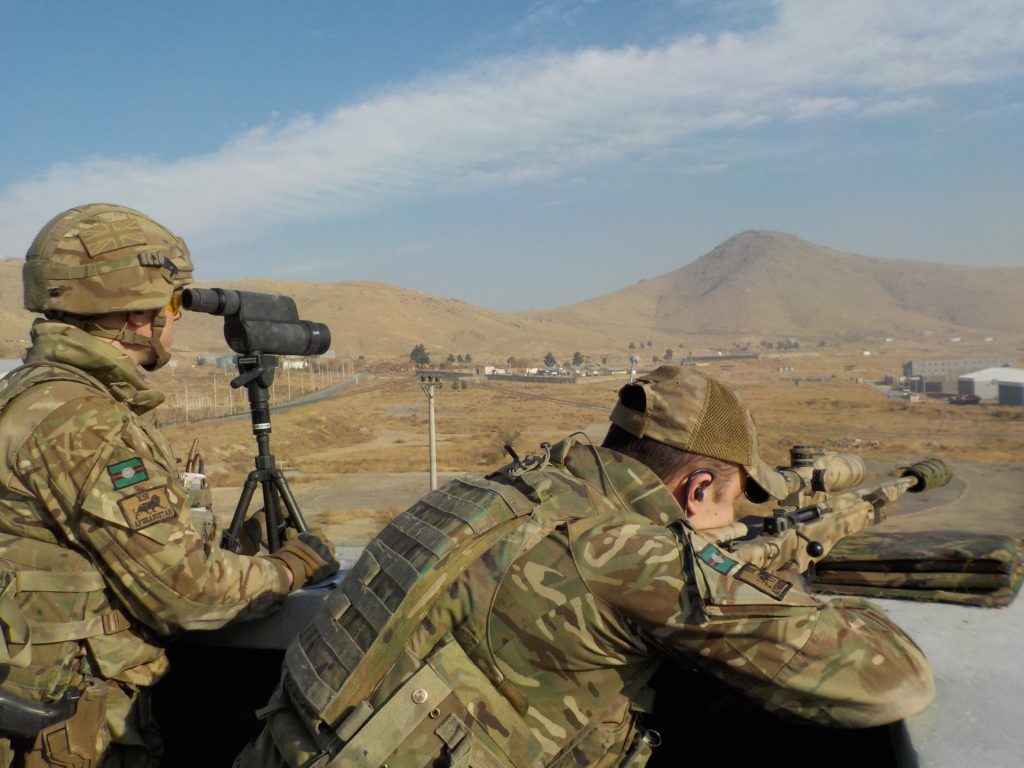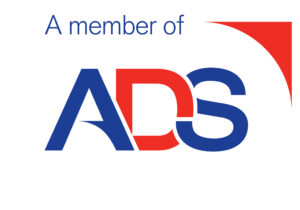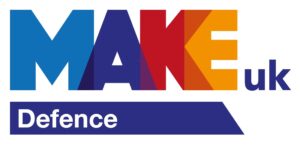In part 1, Barry Harris talked about the definition of Long Range EO Surveillance and how it varies considerably depending on the particular application. In part, 2 an indication of the performance achievable from various Long-Range EO surveillance sensors is considered. It is based on the UK Home Office Discrimination criteria, which is easier to assimilate than the Johnson Criteria.
SURVEILLANCE HEAD PERFORMANCE
As the focal length of the Sensors increase the field of view decreases and the need to be able to position and control the sensor accurately becomes more critical. The distances quoted in the examples below are those required to give images of a 1.6m tall target is occupying 100%, 50% and 10% of the display screen height.
All of the Camera Head Assemblies are equipped with zoom lenses that have minimum and maximum angles of view. The minimum and maximum vertical fields of view are shown on the following graphics and are used to calculate target height.
All calculations are based on a ½” format camera. It is possible to use 1/3” lenses, which will reduce the field of view and increase the effective range of the particular system. Care needs to be taken fitting smaller format cameras to larger focal length lenses when the overall system resolution and the Modulation Transfer Function of the system becomes an important consideration.
EO Sensor example 1:
This equipment combination is suitable for short-range general-purpose surveillance where the camera is located close to the target and where there is no requirement to “see” a long way. The lens is a high quality ½” format F1.6 16:1 (7.5-120mm) motorised zoom lens with the pre-set facility. This particular combination of camera and lens will provide the following fields of view.
EO Sensor example 2:
The following equipment combination is suitable for intermediate longer range surveillance applications such as recognition of a target within a crowd or for the reading of vehicle licence plates at distances up to 300m. It is suitable for use where the camera cannot be located close to the target (i.e. high on a building) and where there is a requirement to “see” a long way. The lens is a high quality ½” format F1.5 30:1 (10-300mm) motorised zoom lens with the pre-set facility.
The field of view of this particular sensor cannot be adequately controlled with a standard Pan and Tilt Head due to the lack of controllability and mechanical backlash. A high quality, DC, variable speed, pre-set, Pan and Tilt head fitted with “zero” backlash gearing is required to satisfactorily control the movement of this particular sensor. The drive electronics need to be capable of resolving smooth creep speeds.
EO Sensor example 3:
This specialised sensor combination is used for long-range surveillance applications such as individual target identification. It is suitable for use where the camera cannot be located close to the target (i.e. for safety or security reasons) and where there is a requirement to “see” a long way. The lens is a specially developed high-quality ½” 50:1 (10-500mm) motorised zoom lens fitted with an X2 range extender and with the preset facility. The camera is a high-resolution ½” format Day/Night colour device.
The movement of this particular sensor cannot be adequately controlled with a standard Pan and Tilt Head. A high quality, DC, variable speed, Pan and Tilt head fitted with “zero” backlash gearing or a high precision Pan and Tilt Head known as a Director is necessary.
This particular combination of camera and lens will provide the following fields of view.
EO Sensor example 4:
This specialised sensor combination is used for very long range surveillance applications such as individual target identification. It is suitable for use where the camera cannot be located close to the target (i.e. for safety or security reasons) and where there is a requirement to “see” a long way. The lens is a specially developed high quality 1” format 60:1 (15-900mm) motorised zoom lens fitted with an X2 range extender and with the pre-set facility.
Due to the larger format of the lens, it is also possible to provide an enhanced low-light performance using Intensified cameras. Generally, these will take the form of a changeover camera between Intensified/colour.
Due to the extremely narrow fields of view possible with this camera head, it is essential that it is mounted on a precision Pan and Tilt Head known as a Director.
This particular combination of camera and lens will provide the following fields of view.
LONG RANGE EO SURVEILLANCE TECHNIQUES
The previous section attempts to give an idea of the level of performance that is achievable with different electro-optical camera heads. Long range surveillance systems can be supported by other technologies which are described below.
ELECTRO-OPTICAL SENSORS
Electro-Optical systems have the ability to be controlled and monitored remotely from the optical device. Such systems have the ability to obtain more information from the image by electronic picture enhancement and reviewing individual picture frames. The remoting facility is of particular use in covert surveillance applications. CCD cameras are solid state, small, robust and cheap, the potential for using such cameras has increased. A low light TV (LLTV)is a camera with a Gen II image intensifier in its optical path. Since these cameras are too sensitive for daytime use, a conventional colour or monochrome camera is switched into the optical path for daytime use. These cameras have the disadvantage of reduced performance in heavy rain or fog or at high temperatures where heat haze may spoil the image.
THERMAL IMAGING CAMERAS
The Electro-Optical Sensor described above operate in the visible spectrum at wavelengths up to 900nM, Thermal Imaging (TI) cameras operate in the 3-5μM or 8-12μM. All objects radiate electromagnetic energy. Most of the radiation occurs at frequencies in the IR band, and the amount of energy emitted depends mainly on the temperature. TI devices operate in the far IR band and by sensing this energy can resolve temperature differences. This sensitivity allows differences across the target or between it and its background to be resolved and from this, a picture of the target can be formed on a TV display. Surveillance targets are usually significantly higher in temperature to those of their surroundings and therefore stand out well.
The advantage of TI cameras is that they are Passive, operate Independent of light levels and hence can operate by day and at night. TI cameras are also capable of penetrating smoke, haze, light camouflage and thin foliage.
TI cameras have the following disadvantages:
- Performance is degraded by heavy rain, mist or fog and high levels of hydrocarbons;
- In order to achieve the required sensitivity, it is necessary to cool the detector element although today uncooled devices exist which have a performance. This adds to the weight, bulk and logistical field support required for a TI;
- TI is expensive, complex, and reliability problems can occur, although experience to date shows that they are not unacceptable;
- Imagers are relatively bulky and heavy (3 Kilograms +) and thus not suitable for all applications.
LASERS
Lasers have three primary applications in surveillance:
- RANGE FINDING
Lasers are capable of measuring range to accuracies in the order of ±5
Metres out to ranges of 20 kilometres. They do this by timing a high-intensity pulse of coherent light from rangefinder to target, and back again. They cannot, on their own detect, recognise or identify a target, and hence must be used in conjunction with other systems (optical, II, TI). Although lasers have the ability to penetrate smoke and to operate in poor visibility, their performance is effectively limited by the sighting system.
- TARGET MARKING
The highly directional properties of a laser beam also make it suitable as a target marker. The beam is directed at the target and the reflections used to indicate to the pilot of an aircraft or to provide a source onto which bombs can home.
- ILLUMINATOR
The highly directional properties of a laser beam also make it suitable as a target illuminator. The beam is directed at the target, and the reflections are visible at a particular wavelength to Intensified cameras.
RADAR
Surveillance radars transmit a pulse of energy, which is reflected by the target and received back at the radar. The direction in which the pulse is transmitted gives the bearing to the target, and the range is obtained by timing the pulse. Since all objects in the path of the beam (hills, buildings, trees, etc.) reflect pulses, most sets are designed to filter out this clutter such that the only returns presented to the operator are from moving objects. These will generally be the targets of surveillance interest.
The advantages of radar are:
- It provides an all-weather, day and night capability, and can operate through smoke and dust. Only heavy rain will degrade its performance.
- It can accurately detect moving targets (vehicles and personnel) and artillery fall of shot.
The disadvantage of radar is:
- It has a limited ability to recognise and identify targets. Audio output can be provided which enables a skilled operator to listen to the signal, and from it to classify targets.
- It is active.
- It is relatively bulky and uses considerable power.
SENSOR FUSION
From the discussions above regarding the types of technology available to achieve long-range surveillance, it can be seen that no single technology has the capability of providing a total solution under all conditions. To increase the overall availability of the system, it may be necessary to include a number of sensors in the package. This configuration is referred to as sensor fusion. Typically, this could consist of a combination of daylight, lowlight, thermal and radar, also GPS, and other non-optical sensors.
The art of combining multiple sensors to produce an accurate “ground truth”, is Sensor Fusion. This is a method for integrating data provided by various sensors, not just EO and TI sensors, in order to obtain the best Situational Awareness (SA). Sensor fusion algorithms are particularly useful in Unmanned System applications, where performance and reliability are desired, given a limited set of inexpensive sensors.
Barry ET Harris MBE is a consultant for Proelium Law LLP, he is a British Army veteran, he combines operational experience with extensive commercial consulting, executive, and management expertise gained in complex environments and high-risk jurisdictions worldwide.
Need advice?
If you’d like further information, or to discuss working with us, please get in touch






